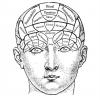
Make it simple, acceptance tests, release dates, current status, estimation. I extensivley used the Jira tool and its fine.


In my research study, I need to identify the list of key features of user story management tools that can be used to support agile development. So far, I identified the following general groups of features: User role modeling and personas support, User stories and epics management, Acceptance testing support, High-level release planning, Low-level iteration planning, and Progress tracking. Each group contains some specific features, e.g., support for story points, writing of acceptance tests, etc.
Please help me elaborate the list by posting your list of such features, such as those that you've already used as part of a user story management tool, or those that you'd like to see in the software tool you use. Do you find some features more important than the others? Many thanks in advance!

Make it simple, acceptance tests, release dates, current status, estimation. I extensivley used the Jira tool and its fine.

For me auto/canned notifications are a god send. It allows me to communicate with my customers in real-time and saves so much effort and lost productivity